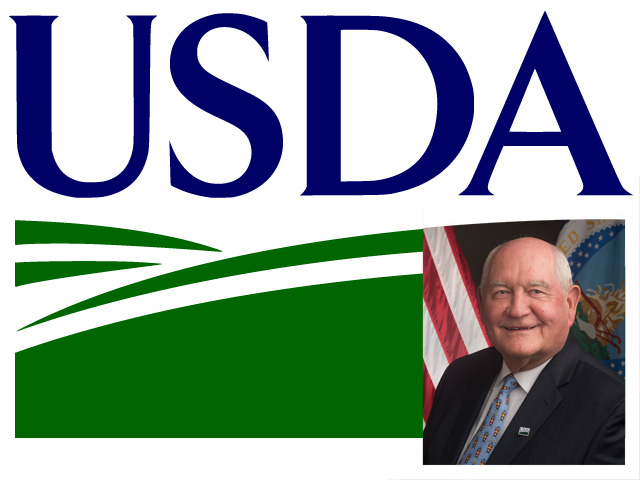The U.S. Department of Agriculture will make special purchases of well over $400 million in fruits and nuts to help U.S. growers hurt by retaliatory tariffs.
The Food Purchase and Distribution Program is one of three USDA designed to help growers hurt by this year’s trade battles and will spend about $1.2 billion to purchase commodities, and it is most immediately relevant to specialty crop growers.
The other USDA programs for tariff relief are the Market Facilitation Program — giving direct payments to some grain and livestock producers — and the Agricultural Trade Promotion Program. The trade promotion program gives commodity promotion groups millions to help develop and expand export sales.
Purchase purposes
The USDA’s Agricultural Marketing Service will administer the Food Purchase and Distribution Program to purchase up to $1.2 billion in commodities, according to a news release. More than $400 million the targeted purchases are fruits and nuts.
The specific commodities to be purchased are those impacted by unjustified tariffs imposed by other nations.
According to the release, purchases will be spread over several months and the USDA’s Food and Nutrition Service will distribute these commodities through nutrition assistance programs such as the Emergency Food Assistance Program and child nutrition programs. Amounts to be purchased are based on an economic analysis of the damage caused by tariffs illegally imposed on these crops by some trade partners, according to the USDA.
Gregory Iback, USDA undersecretary for marketing and regulatory programs, said in a press call Aug. 27 that the USDA will spread out purchases over four different phases and would try not to displace school food purchases that would normally occur.
The staggered purchases seek to accommodate changes due to growing conditions, product availability, market conditions and even the status of trade negotiations, he said.
The USDA also is seeking to attract new vendors in its procurement program, he said.
“We are tailoring the specifications of the (commodities) that we will be purchasing to line up with those high-quality, high-value crops and categories within the commodities that were destined for the foreign marketplace,” he said.
“For example, instead of buying just oranges, we’re going to be buying extra fancy oranges that were destined for the Chinese marketplace before the illegal tariffs were put in place,” he said.
The food purchases will be targeted to people who aren’t getting enough food on a daily basis. The school lunch program won’t be a primary target audience, he said.
Mark Powers, president of the Yakima, Wash.-based Northwest Horticultural Council, said the industry has communicated with USDA that exporters are losing premium fruit sales, especially in China.
“We spent quite a bit of time (with USDA officials) going through what we are looking for if they are really looking at assisting those who export,” Powers said. “Hopefully that will be incorporated (commodity purchases) and dollar values there will help offset what we see as the loss of China (sales),” he said.
For more information on the Food Purchase and Distribution Program, contact Christopher Purdy at Christopher.Purdy@ams.usda.gov.
USDA fruit and nut targeted purchases by commodity
- Apples, $93.4 million;
- Apricots, $200,000;
- Blueberries, $1.7 million;
- Cranberries, $32.8 million;
- Figs, $15,000;
- Grapefruit, $700,000;
- Grapes $48.2 million;
- Hazelnuts: $2.1 million;
- Lemon/limes: $3.4 million;
- Macadamia, $7.7 million;
- Oranges, $55.6 million;
- Pear, $1.4 million;
- Pecans, $16 million;
- Pistachios, $85.2 million;
- Plums/prunes, $18.7 million;
- Potatoes, $44.4 million;
- Strawberries, $1.5 million;
- Sweet Corn, $2.4 million; and
- Walnuts, $34.6 million.
Source: USDA







